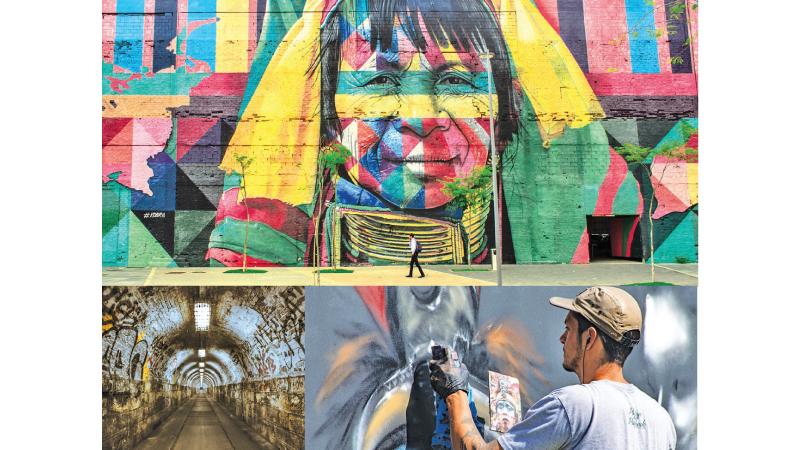
Graffiti is a form of artistic expression and visual communication on surfaces or places in public view. This is also the exact definition of Street Art, but the primary distinction between the two is legality. All graffiti, inherently, is considered by most authorities as defacement and vandalism.
The word, graffiti, itself is derived from the italian word graffito, meaning scratched. Street art, on the other hand, is created with permission or is sometimes even commissioned. They are essentially very similar in concept, and to an outsider looking in. the difference would be indiscernible. However, the intent and general techniques behind Graffiti and Street Art can vary greatly from one another.
Difference
Besides the legality, the greatest difference between graffiti and Street Art is the intent. As it is created without permission, Graffiti artists are generally unconcerned with the public perception of their art. Graffiti for most, is pure self expression. Historically, graffiti has also been used as a tool of political and social activism. Due to its illegal nature, graffiti artists can make provocative commentary on social and political issues that have been publicly omitted, without concern for drawing the ire of authorities.
In contrast, Street Art is created for a specific public audience, especially in the case of when it is commissioned by a group, organization or business to represent their own agendas and ideas. Though Street Art can be just as evocative as Graffiti, it is by definition, more constrained in what it can portray through its messaging.
By the loosest possible definitions of Street Art and graffiti, it is possible to date its existence back to the prehistoric era with cave paintings. However, as the concept of property ownership is a product of civilization, more familiar instances of graffiti would not exist for a while later.
Ancient Greek and Roman civilizations were well known for their graffiti, preserved for centuries on their many surviving artifacts and architecture. The most popular examples of which were often rude and vulgar in nature, though other more innocent ones also exist, such as unsigned poetry carved into a wall.
Surviving graffiti from those times, helps paint a clear picture of the mundane lives lived by the common people, more so than the epics written by high profile philosophers. Another popular example of ancient graffiti is from Sri Lanka’s very own Sigiriya Mirror Wall, which depicts random musings carved in by the elite of society between the 6th and 18th centuries. Just as with the Greco-Roman graffiti, the Mirror Wall graffiti well represents the feelings, appreciation of art and level of literacy from people of the time.
Morale and solidarity
One of the most well known precursors to more contemporary Graffiti, was the famous “Kilroy was Here” image during WWII. Used by US servicemen, they would write the words with an accompanying doodle on the walls wherever they visit.
It served as a point of morale and solidarity for the troops, as no matter what obscure hole a US soldier was stationed at, if that symbol existed, a fellow soldier was there before them. But contemporary Graffiti as we now know it would not truly prosper until the aerosol paint became an easily accessible and affordable item.
Though the specific origin is unknown, it is typically understood that graffiti was popularized by America’s Black and Latino neighborhoods in the 1960’s, directly inspired by hiphop and street subcultures. The earliest form of contemporary graffiti took the form of “tagging”, the marking of a specific artist’s signature or name across many locations, as a way of your work being seen by as many people as possible. “Being seen” was a major driving force for graffiti artists, which attracted them to start tagging trains and the subway.
With time, the graffiti artists created their own styles and culture, with groups of graffiti artists creating “crews”. This growth and organizing emboldened them to tag as many public surfaces with their work as possible, which led to authorities to begin taking action against them, as they saw the wanton tagging as a threat to the peace and their authority.
However, despite the many lengths taken to curb graffiti art, it persists to this day, and has only inspired similar cultures globally. It became a voice for many of the voiceless around the world to express themselves. With time, the aggression towards graffiti would wane, and it came to be accepted by the mainstream.
This acceptance allowed many graffiti artists to transition into becoming legal Street Artists, allowing them to be paid for their work. The graffiti that exists, and continues to be created is seen by their communities as part of their culture, and is part of their pride, even though it is still illegal.
